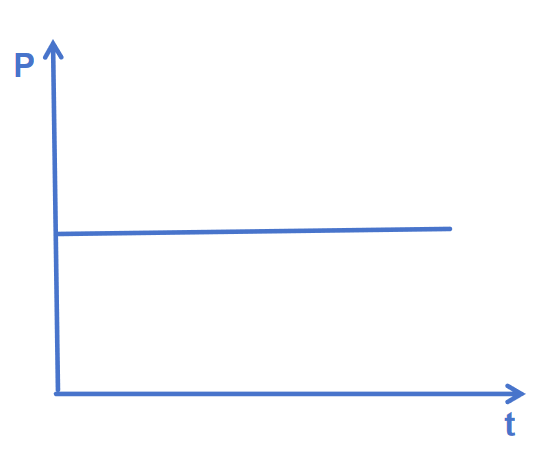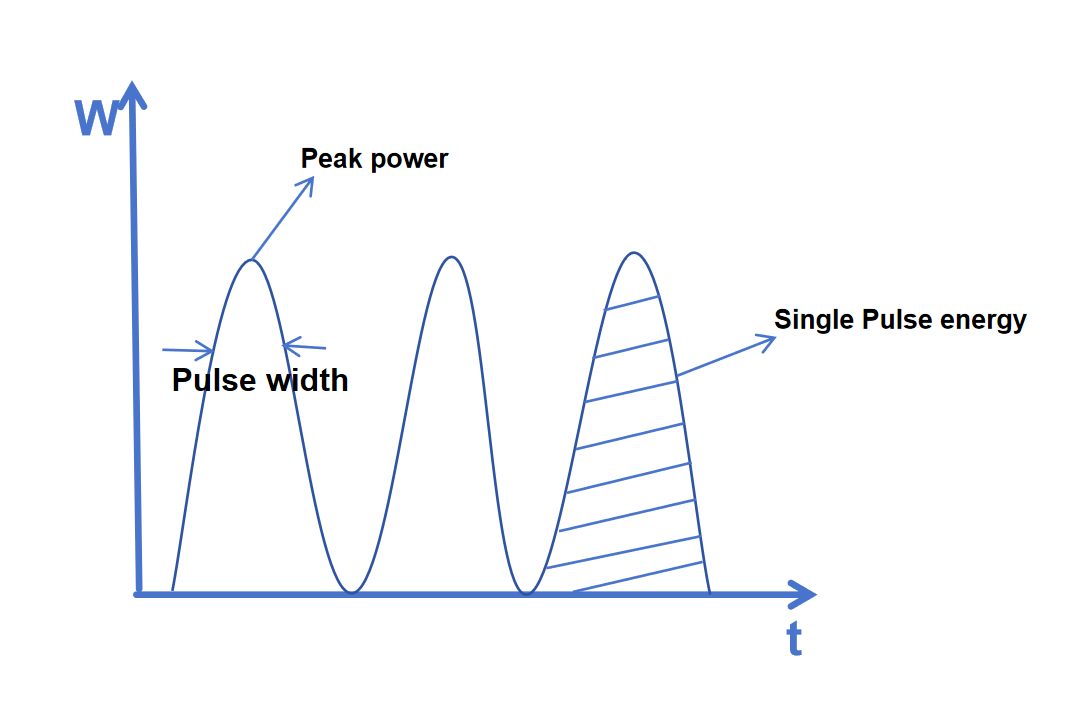Lasers are composed of a light amplifier and an optical resonator, where light oscillates within the resonator to generate a coherent beam. Based on the mode of oscillation, lasers can be categorized into two main types: Continuous Wave (CW) lasers and Pulse laser.So what is the difference between the two?Let’s take a look.
Continuous Wave Laser (CW Laser)
A continuous wave laser produces a constant output of power, maintaining steady oscillation over time. It behaves like a “laser knife,” where the energy is delivered continuously. Key characteristics and applications include:
Constant Power Output: Delivers a stable beam with uniform energy over time,as shown in the figure below:

Graph of continuous laser power changing with time
Applications: Commonly used for sheet metal cutting, welding, cladding, drilling, and surface treatment, where continuous energy is needed to process thicker materials efficiently.
Analogy: Like a knife cutting through material, higher power allows cutting or welding thicker metal plates with precision.
Pulse Laser
A pulse laser generates intermittent bursts of laser energy at a fixed repetition rate. Instead of a constant beam, energy is delivered in pulses, allowing precise control over the interaction with the material. Key parameters include:
Pulse Width: The duration of each individual pulse, ranging from milliseconds to nanoseconds, picoseconds, or femtoseconds. Shorter pulse widths mean the laser interacts with the material for a very brief time, minimizing heat diffusion.
Repetition Frequency: The number of pulses emitted per second, controlling how frequently energy is applied to the material.
Single Pulse Energy: The energy carried by a single pulse. Combined with peak power, it determines the impact of each pulse.
Average power: Refers to the total power emitted by the laser per unit time.
Peak power :Is the instantaneous power within each pulse, which can be hundreds of times higher than CW output.

Schematic diagram of pulsed laser parameters
Applications: Pulse lasers excel in laser marking, deep engraving, precision welding, thin film cutting, and cleaning, where fine, controlled energy is critical.
Analogy: Like a hammer, each pulse delivers a “strike” of high peak power, working on material in small, controlled increments.
Key Differences Between CW and Pulse Laser
| Feature | Continuous Wave Laser | Pulse Laser |
| Output | Constant power | Intermittent pulses |
| Energy Delivery | Steady, uniform | High peak power per pulse |
| Material Interaction | Longer exposure, larger heat-affected zone | Very short exposure, minimal thermal impact |
| Ideal Applications | Cutting, welding, drilling, cladding | Marking, precision welding, engraving, thin film processing, cleaning |
| Analogy | Knife | Hammer |
Choosing the Right Laser for Your Project
Selecting the right type of laser depends on your specific processing needs:
If your project involves thick metal plates, structural welding, or high-power continuous operations, a Continuous Wave (CW) laser is the best fit.
If you are working with thin sheets, delicate components, or applications that demand ultra-high precision with minimal heat input, then a Pulse Laser will deliver the most reliable results.
At ZS Laser, we provide both CW-based and pulse-based laser solutions, ensuring you get the right tool for your unique manufacturing challenges.
If you’d like to learn more or discuss which laser system is best for your application, feel free to contact ZS Laser anytime — our team will help you find the optimal solution.
 ZS Laser Equipment
ZS Laser Equipment


WhatsApp
Scan the QR Code to start a WhatsApp chat with us.